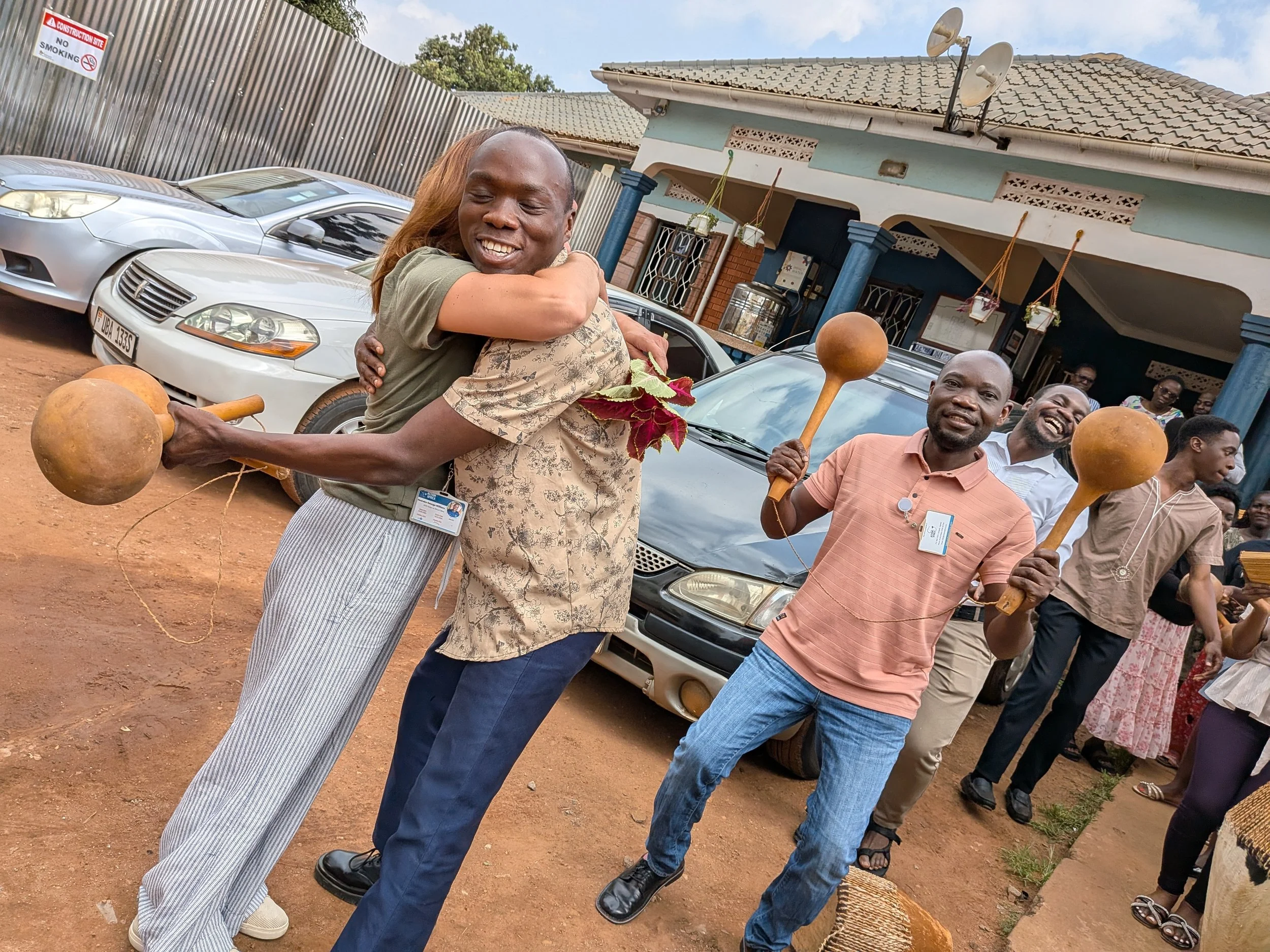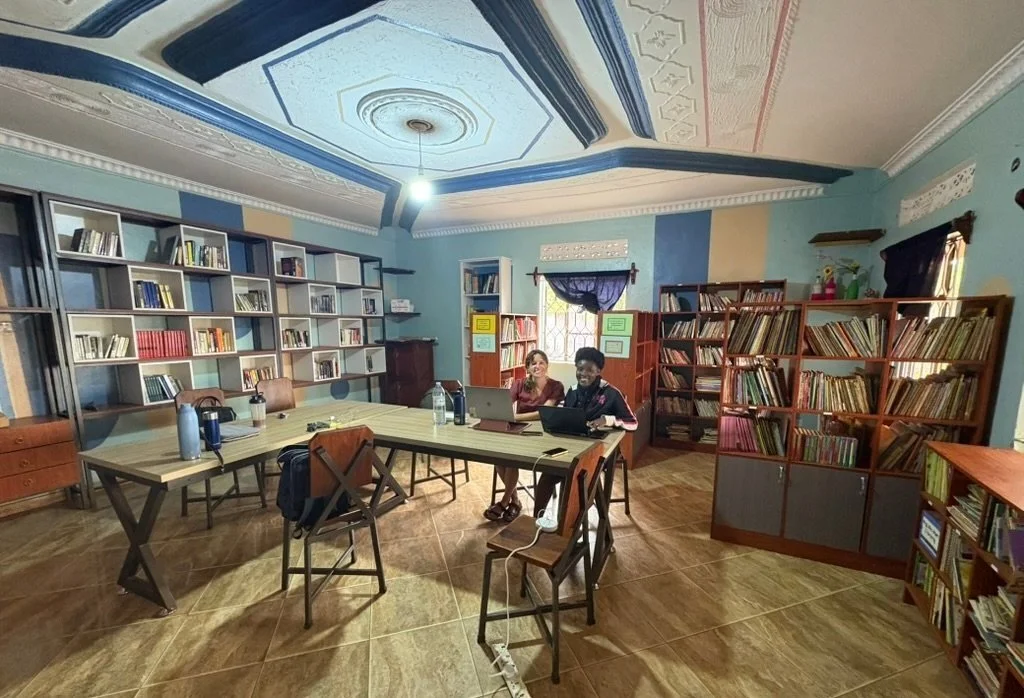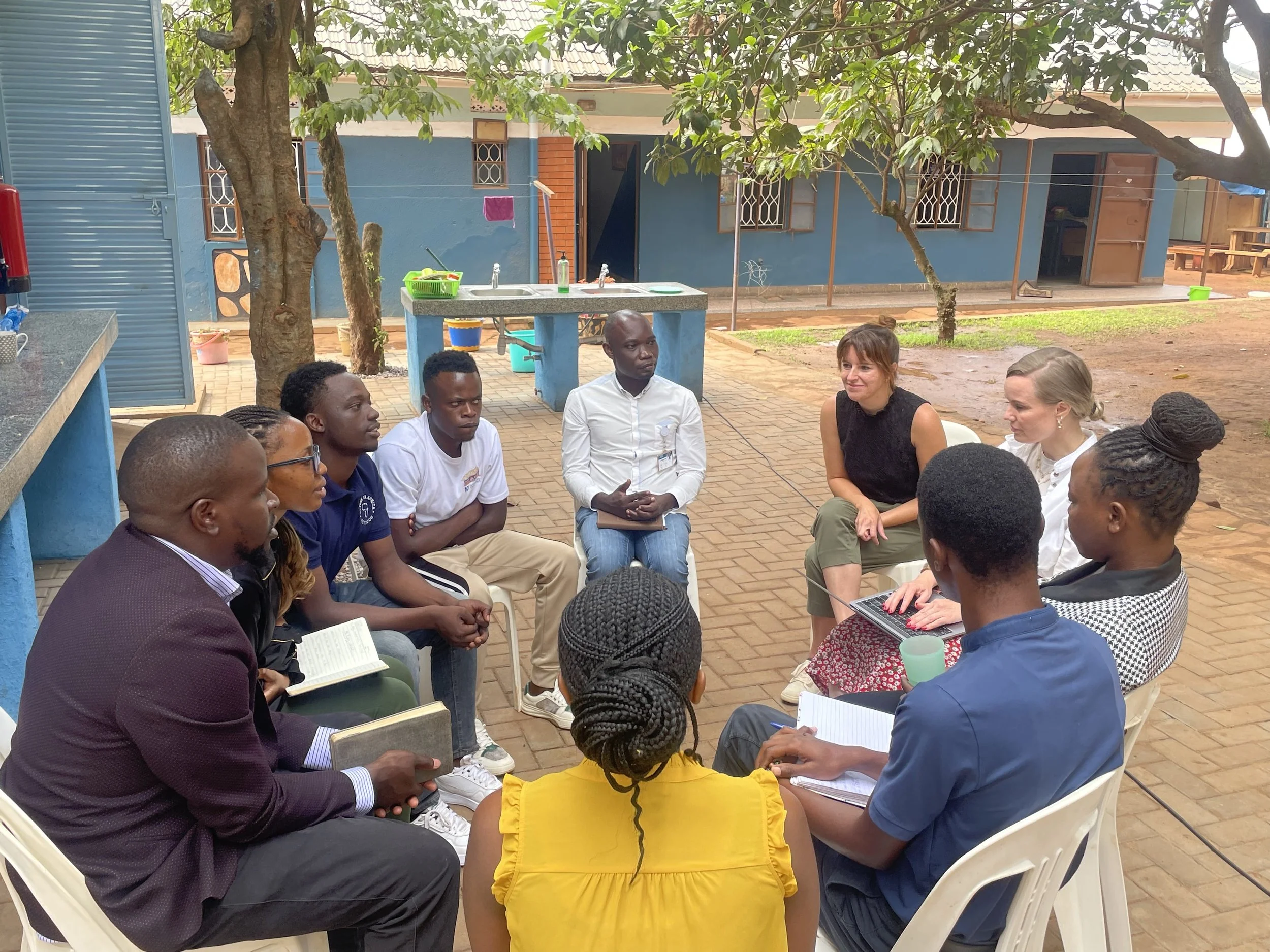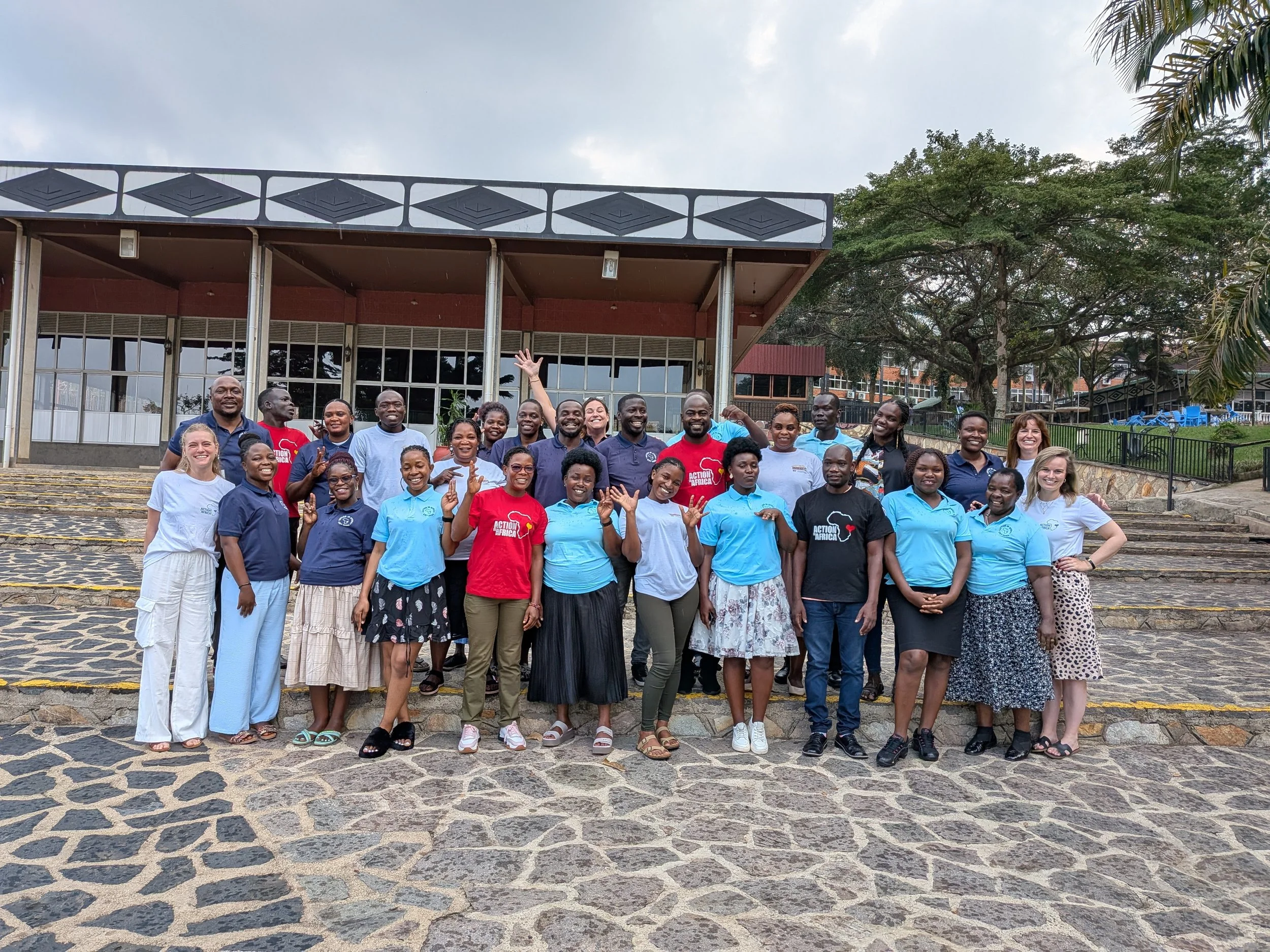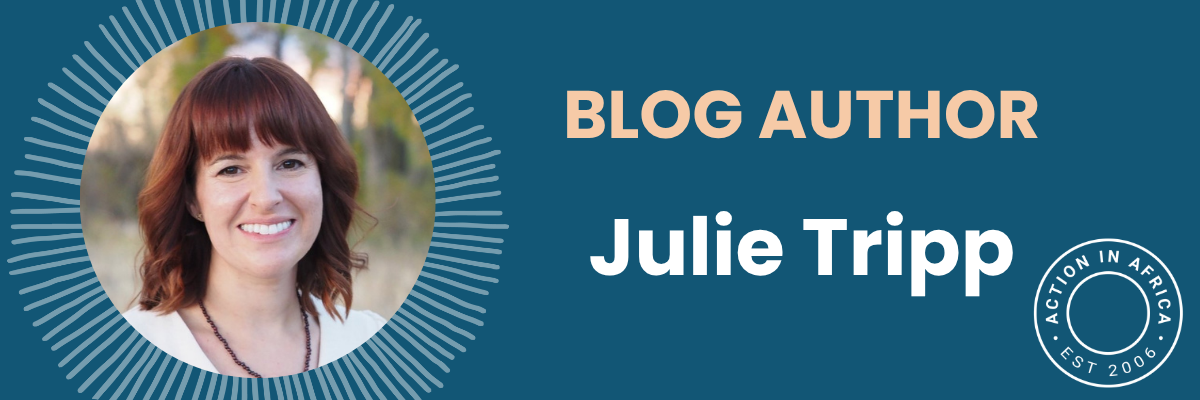How Two Weeks in Uganda Deepened My Belief in Community-Led Change
As I came through the gates of The Center for the first time, I immediately forgot about the heat, red dust, and smoky air. Instead, drums, maracas, laughter, and tight hugs from our Ugandan team surrounded me. After all of our remote meetings and asynchronous collaboration, I finally had the chance to work alongside our full team.
For two weeks, I witnessed a challenging and inspiring rhythm of life. Each morning, staff arrived in their professional best, exchanged smiles and hugs, and brought The Center, a converted residential building, to life. We navigated slow internet connections (thanks our donors’ generosity, we’re installing fiber!), and I watched our Uganda team tackle obstacles with contagious joy.
Even though I’ve researched the country’s challenges, experiencing the infrastructure firsthand was eye-opening. Just 15 kilometers from Uganda’s capital city Kampala, my power went out almost every night. Getting dressed in the dark, brewing coffee or tea, and unpredictable mornings are the common hardships that many Ugandan communities face.
I felt most surprised by the region’s air quality index, which exceeds safe levels by more than sevenfold. My teammate shared that her two-year-old suffered an asthma attack before she left for work, and I saw one of the air quality culprits—trash fires—dotting the roads at all hours. This seemed careless until I learned how last year, the area’s only landfill became a landslide which killed dozens of people, and I realized that these systemic failures do not reflect a lack of care, but rather a lack of alternatives.
In Nakuwadde, Action in Africa empowers individuals to thrive in spite of their difficulties and blaze trails for future generations.
To the tune of roosters crowing and construction tools clanging on our much-needed new pavilion, I watched our staff lead enrichment programs for children, facilitate women’s empowerment workshops, and organize nutritious meals. Every morning, Lucy, one of our security guards, opened the gate singing, “You’re welcome!” with a genuine smile. Judith pointed out which corner of the library she plans to create a children’s reading nook. Our six interns helped themselves to matooke, posho, and g-nut sauce as they recounted their all-staff presentations earlier that day. And every evening, The Center pulsed with energy as After School programs, led by Colline, began. Children ran to yoga mats, chess boards, dance classes, and building blocks to enjoy an afternoon of safe, intentional play.
After a full week of side-by-side work, we shifted into strategy mode starting with a Theory of Change workshop, where every team member defined how their work drives long-term transformation and each department mapped its contribution to our overall impact.
We clarified how education, community building, and creative programming connect to a larger vision that empowers individuals to lead.
Heavy rainstorms drowned out the smells of lunch as it cooked in our new kitchen, and my Ugandan colleagues pulled on winter coats to combat temperatures that most American’s call balmy. And yet, we left the pavilion feeling aligned and invigorated, if not a little soggy.
At the end of my second week, we packed up for an overnight stay on the coast of Lake Victoria. During the retreat we solidified our Theory of Change, re-aligning as a team on our mission and expansion. We discovered that our team scores high on grit, and we played team building games that made us belly laugh. Individually and departmentally, we set goals for the next two quarters, with our recently illustrated north star top of mind.
The work we did these past two weeks didn’t result in immediate change: roadside trash fires continued to burn, and electricity flickered out each night, but Action in Africa offers an evolving blueprint of what’s possible when under-resourced communities have support. Every program run, every child greeted, every strategy mapped helps shift Uganda’s landscape closer to global equity.
I left with a deeper respect for each of our staff members, a better understanding of our responsibility, and faith in what we’re all building together. After this, I have total faith that my colleagues can and will change lives. I've never been more convinced of the power and necessity of a community-led nonprofit.
As I head home, I carry with me the sounds of morning greetings, the joyful rush of children running to activities, and the quiet, unwavering resolve of my wonderful teammates.
I realize now that The Center doesn’t just serve the community, it belongs to them.
George William, AIA’s 2025 Fellow, welcoming me to The Center
The community of Nakuwadde, Uganda
Judith, AIA’s literacy assistant, sharing her plans for the community library and Adult English Program
A breakout session during our Theory of Change workshop
The full team, posing for a group shot at our retreat
